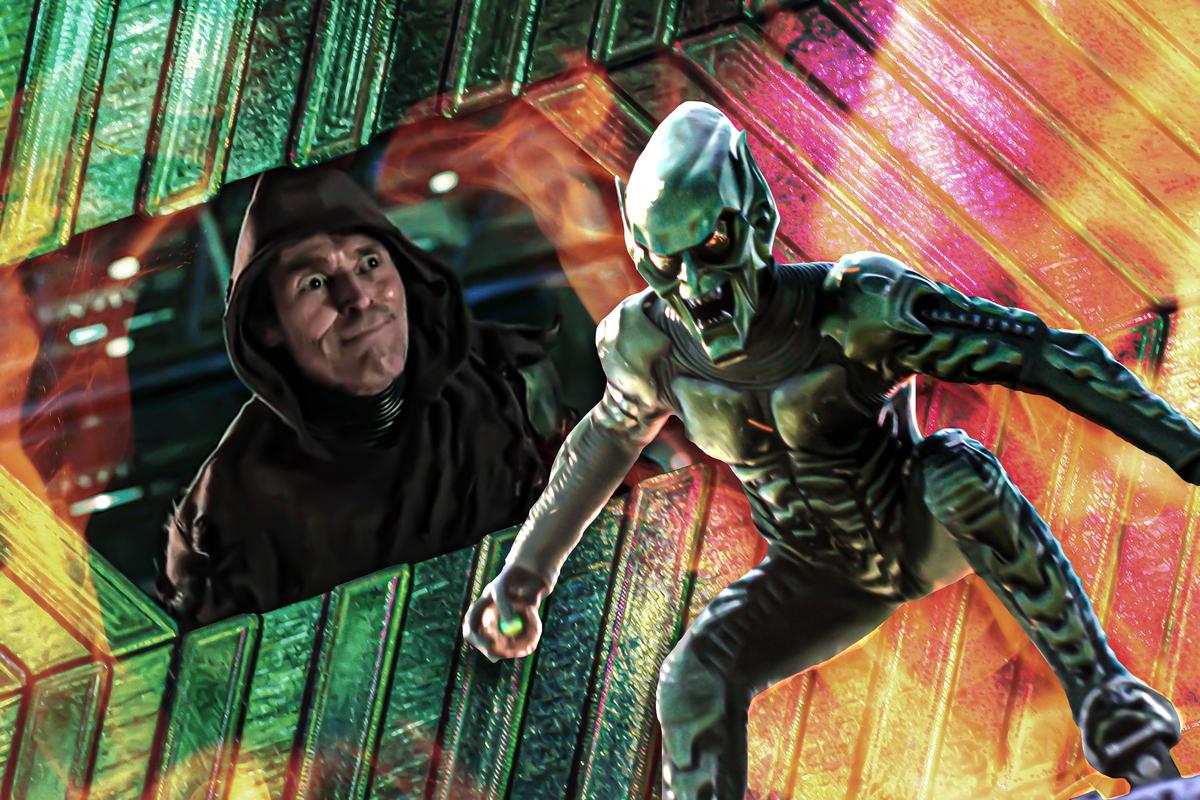

Every superhero needs a good supervillain. We’ve all seen enough superhero movies to know this by now—a story can go only so far when its antagonist lacks a discernible reason for existing in the first place. Sometimes, though, the villain is so good that—even after death—they keep being brought back for more.
The return of Willem Dafoe’s Green Goblin is one of the driving forces behind the success of Spider-Man: No Way Home, which despite the pandemic earned $601 million worldwide in its opening weekend—giving it the third-biggest global debut and second-biggest domestic debut ever. It’s only fitting that the villain who helped usher in a new era of big-budget superhero blockbusters almost 20 years ago in 2002’s Spider-Man is back for the grand finale of a new trilogy of Spidey films. Goblin is one of five bad guys returning to the Spider-Verse in a movie overstuffed with them, but by the end, the only showdown that matters is between Tom Holland’s Spider-Man (Peter 1?) and Green Goblin. (Also, Rhys Ifans’s Lizard is barely in the movie; he’s really only there so that the Spider-Men can have another villain to fight in the final battle and so Peter and his friends can roast him for looking like a dinosaur.) Although No Way Home marks just the second corporeal appearance that Dafoe makes across all three live-action Spider-Man series—excluding his ghostly returns to haunt his son in Spider-Man 2 and Spider-Man 3—Green Goblin helps tie together every era of the film franchise.
Some of the best scenes in Sam Raimi’s original Spider-Man center on neither a CGI battle sequence nor on Spider-Man himself. These memorable moments occur when the rest of the cast steps aside, leaving a mirror as Dafoe’s sole scene partner. That’s the only prop Dafoe needs to portray two distinct personalities trapped within the body of genius industrialist (and Oscorp Technologies founder) Norman Osborn.
Osborn’s inner turmoil makes him the perfect foil for Tobey Maguire’s Peter Parker (Peter 2?), as the high school senior learns how to be a hero and accepts the sacrifices he must make to live a dual life as Spider-Man. Osborn uses both Aunt May and Mary Jane against Peter after discovering the identity of the teen beneath the red-and-black mask, which heightens the conflict caused by Peter’s decision to remain anonymous as he dedicates himself to a life of fighting crime. Even after Goblin is killed by his own glider at the end of the film, his presence looms over the remainder of the trilogy. His death sends his son Harry (James Franco) on a slow descent into madness, which culminates in the younger Osborn picking up the nemesis mantle by becoming the new Green Goblin.
By 2014’s The Amazing Spider-Man 2, the second film featuring Andrew Garfield’s version of the web-slinger, director Marc Webb and Co. were already looking to bring back the Green Goblin again—though this time with Harry Osborn (Dane DeHaan) becoming the villain first, after his father (played by Chris Cooper) dies from a terminal illness. Sony reportedly planned to revive Cooper’s Norman Osborn in The Amazing Spider-Man 3 as yet another incarnation of Green Goblin. However, The Amazing Spider-Man 2 received mixed reviews, and its muted release ended hopes of further films starring Garfield’s Spider-Man. Even so, the defining moment in the Garfield-centric series came when DeHaan’s Green Goblin killed Gwen Stacy after Spider-Man (Peter 3?) failed to save her in time.
To conclude Peter Parker’s coming-of-age trilogy and rebirth in the MCU, Marvel Studios couldn’t resist the urge to bring back his greatest enemy, with a little help from the rule-bending capabilities of the multiverse. Despite the 14 years and dozens of Marvel movies since Dafoe’s last appearance as Osborn in Spider-Man 3, the actor’s performance remains as riveting as it was in his iconic first turn inside the armor. Dafoe flips with ease between the personas of the cowardly Osborn and the vicious, snarling Green Goblin, playing off of his own contrasting performances in the present and the past. And beyond Dafoe’s unsurprising acting prowess, the character’s presence allows the franchise to fulfill its goal of bringing Spidey’s story full circle. Goblin guides the movie toward the themes that persist throughout Spider-Man’s three disparate life cycles, as well as many of its major plot points.
No Way Home is a movie built on years of nostalgia and fans’ abiding love for their friendly neighborhood Spider-Man. Its story—driven by a teenager’s dumb attempt to get into college by recruiting a sorcerer to brainwash the entire world—isn’t all that compelling; 2018’s Spider-Man: Into the Spider-Verse stood out much more in that regard. What separates No Way Home from its animated multiversal counterpart is its efforts to serve as the Avengers: Endgame of live-action Spidey movies by weaving a web that encompasses seven films, three Spider-Men, two Uncle Ben deaths, and a lot of lessons about great power and great responsibility. In this new world that Goblin seeks to conquer, he weaponizes Peter’s personal connections against him—just as he did to Tobey’s Spider-Man—as he kills Aunt May in an attempt to send him down a darker path. “Peter, you’re struggling to have everything you want, while the world tries to make you choose,” Goblin tells a distraught Peter not long before he kills Aunt May in front of him.
The film also redeems the defining mistakes that the Peters made in their earlier films—and that redemption is directly tied to Green Goblin. Peter 3 gets a second chance at saving Gwen, catching MJ as she falls off the side of the Statue of Liberty after Peter 1 is unable to reach her. And when Holland’s Spider-Man—in a blind rage—nearly impales Osborn in their final confrontation using the blades of his Goblin glider, Peter 2 (that is, Tobey) jumps in to catch it and gets stabbed in the back by Goblin for his trouble. A central theme of No Way Home revolves around the Spider-Men trying to save the enemies that they’ve previously sentenced to tragic fates, but by the end, they all have the chance to redeem a part of themselves, too. Holland’s Peter Parker loses his beloved aunt, but he also learns that he can’t continue living his dual life as Spider-Man and gives up almost everything he has except his new Spidey suit. (Speaking of which, Peter is going to need to do something about his apartment; grown-man Peter can’t be out here with nothing more than a bed, a sewing machine, and a piece of a Star Wars LEGO set.)
Even after two dozen films, the MCU still struggles with a nagging villain problem, often positioning its heroes against adversaries who serve as little more than props—obstacles for the protagonists to overcome on their path to glory. The best villains, however, are the ones that leave a lasting impression that shapes who the hero becomes, while also giving the audience someone to root against and empathize with as a three-dimensional character. For at least one movie, Marvel solved its persistent issue with Big Bads by resurrecting one of the all-time greats in Green Goblin and using him as the hinge for all of No Way Home’s conflicts and themes. Given all of the possibilities that the multiverse allows, the studio might choose to reuse this strategy again to revive other unforgettable villains. But almost 20 years after he first took on the role, Dafoe’s performance as Green Goblin is one of a kind.

